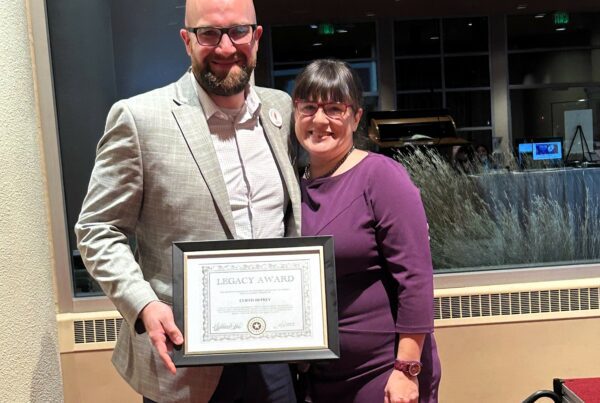
The Consolidated Omnibus Budget Reconciliation Act (COBRA) is a federal law that provides employees and their families with the right to continue group health insurance coverage for a limited period of time due to qualifying events.
Qualifying events and qualifying beneficiaries under them include:
- Termination of the employee (unless due to gross misconduct)
- Qualified beneficiaries: the covered employee, their spouse, and dependent children.
- Reduction in work hours
- Qualified beneficiaries: the covered employee, their spouse, and dependent children.
- Divorce/legal separation
- Qualified beneficiaries: the covered employee’s former spouse and dependent children.
- Employee enrollment in Medicare
- Qualified beneficiaries: the covered employee’s spouse and dependent children.
- Death
- Qualified beneficiaries: the covered employee’s spouse and dependent children.
- Loss of dependent status under the plan
- Qualified beneficiaries: the covered employee’s dependent child.
Employers who are subject to COBRA regulations are required to follow certain steps to ensure that eligible employees and their families have access to COBRA continuation coverage.
Steps Employers Need to Take Regarding COBRA
Step 1: Determine if the Employer Is Subject to COBRA
The first step for employers is to determine if they are subject to COBRA regulations. COBRA applies to private sector, state, and local government employers who employed 20+ workers on more than 50% of their typical business days in the previous calendar year.
Both full-time and part-time employees are included in this number, however, part-time employees only count as a fraction of an employee. To calculate what fraction a part-time employee counts as, divide the number of hours they work on a weekly basis by the number of hours a full-time employee works.
- Example: if a full-time employee works 40 hours per week and the part-time employee only works 10 hours, they would only be counted as 1/4th of an employee.
Step 2: Provide a General Notice
Employers must provide all new plan enrollees and their spouses a general notice of their COBRA rights within the first 90 days of coverage. Employers can provide a general notice within their plan’s Summary Plan Description (outlines how a plan works and what it offers).
The notice must include the following information:
- The plan name and contact information of someone (e.g., plan administrator or employer) the employee and their spouse can reach out to regarding COBRA and their health insurance plan.
- Description of the plan’s COBRA continuation coverage and an employee’s right to elect it if they experience a qualifying event.
- Time frames and procedures for employees and their beneficiaries to notify the plan of a qualifying event and elect coverage.
- An explanation of the importance of keeping the plan administrator informed of the addresses of the plan’s participants and beneficiaries, and a statement that the general notice does not fully describe COBRA or the plan.
Step 3: Provide Notice of a Qualifying COBRA Event
Under specific qualifying events, it is up to the employer to notify the group health plan. An employer must notify the plan if the qualifying event is related to the termination of the employee, reduction in work hours of the employee, death of the employee, the employee enrolls in Medicare, or if the employer goes bankrupt. The employer has 30 days to notify the plan after the qualifying event.
It is up to the employee or employee’s beneficiaries if the qualifying event is related to a divorce/legal separation or a child’s loss of dependent status under the plan. The time employees must report this varies from plan to plan.
Step 4: COBRA Election Notice
After notice of a qualified event is received by the plan, the plan administrator/employer has 14 days to provide the employee and his or her beneficiaries with a COBRA election notice.
The notice should include:
- The plan name and the contact information of the plan’s COBRA administrator.
- Identification of the qualifying event and the names of the qualified beneficiaries.
- The right to elect continuation coverage, how to do so, and the duration of the coverage.
- The deadline for electing coverage and what happens if it isn’t elected.
- An explanation of when continuation coverage can be terminated early.
- The cost of the insurance premiums.
- It is important to note that the employee and his or her beneficiaries are responsible for paying the full cost of their health insurance premiums, including the portion previously paid by the employer, and in some circumstances, a 2% administration charge.
- An explanation of the importance of keeping the plan administrator informed of the addresses of the plan’s participants and beneficiaries, and a statement that the election notice does not fully describe COBRA or the plan.
Step 5: Allow for Election of COBRA Continuation Coverage
Once the employer has provided the appropriate notices, eligible employees and their families have the right to elect COBRA continuation coverage. Employees and their families must be given at least 60 days to elect COBRA continuation coverage.
*If an employee or his or her spouse or dependents are not eligible for COBRA continuation coverage, the employer must provide a notice of unavailability of COBRA. This notice must be provided within 14 days of receiving the request from the employee and must explain the reasons for the unavailability of COBRA.
Step 6: Notify the Health Plan Administrator
Once the employee has elected COBRA continuation coverage, employers must notify the plan administrator of the election. You must also provide the plan administrator with any necessary information, such as the employee’s contact information and the duration of the COBRA continuation coverage.
Step 7: Provide COBRA Coverage
Once the plan administrator has been notified of the COBRA election, they must provide the employee and his or her beneficiaries with the same health insurance coverage as similarly situated individuals who are not on COBRA. Usually, this just means they receive the same coverage they had prior to the qualifying event. This includes any deductibles, copays, and out-of-pocket maximums.
It’s important to note that you’re not required to pay for any portion of the COBRA insurance premiums as an employer. However, you may choose to subsidize the cost of the premiums to help ease the financial burden on your former employee.
Step 8: Terminate COBRA Coverage
COBRA coverage typically lasts 18 to 36 months, depending on the qualifying event. For example, if the qualifying event is for the termination of the employee, the maximum period of coverage is 18 months, while if it’s for the employee’s enrollment in Medicare, the maximum period of coverage is 36 months. Unless an employee’s request for an extension of continued coverage is accepted, the coverage will terminate at the end of the COBRA coverage period, and the employee will need to find alternative health insurance coverage.
It’s important to note that if the employee fails to pay their COBRA insurance premiums on time, their coverage may be terminated earlier. As an employer, you must provide the employee with notice of the termination as soon as possible, the reason for termination, the date coverage will end, and any options for alternative health insurance coverage.
Step 9: Maintain Records
As an employer, you are not required to maintain records related to COBRA continuation coverage, but it is recommended that you do for at least six years. These records should include copies of COBRA notices and election forms, evidence of premium payments, and any other relevant documentation.
Maintaining accurate and complete records is important for demonstrating your compliance with COBRA insurance requirements in the event of an audit or investigation.
Conclusion
COBRA continuation coverage is an important benefit for employees who experience a qualifying event that results in the loss of their health insurance coverage. Following this step-by-step guide can ensure employers subjected to COBRA regulations are within compliance and maintaining their responsibilities. For more information and an extensive guide on COBRA continuation coverage for employers, visit the U.S. Department of Labor’s Employer COBRA guide.
For additional questions and support you may have regarding COBRA, don’t hesitate to contact us directly at MSIG. For help with other aspects of your group health insurance plan, request a free group health insurance quote to speak with an MSIG benefits specialist who can walk you through your options.



